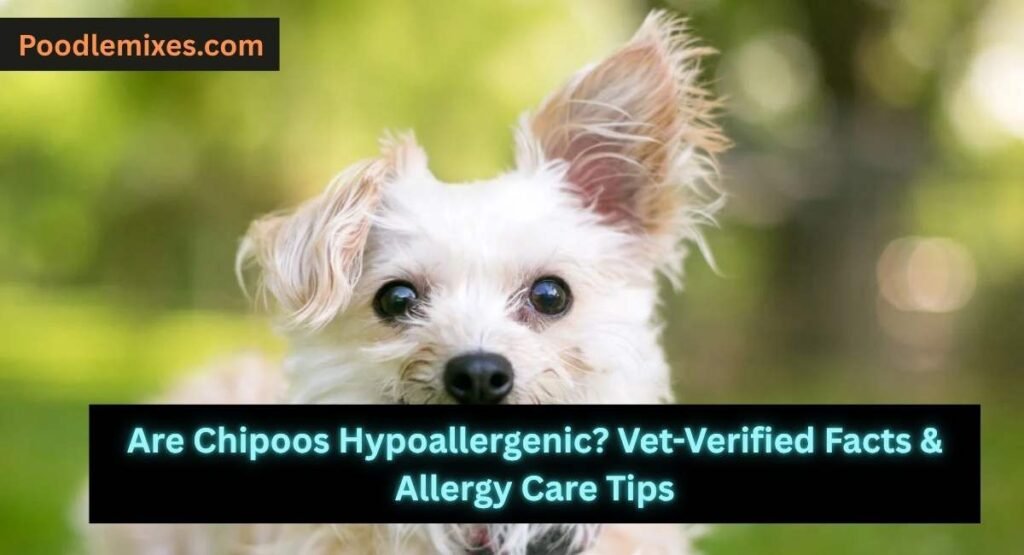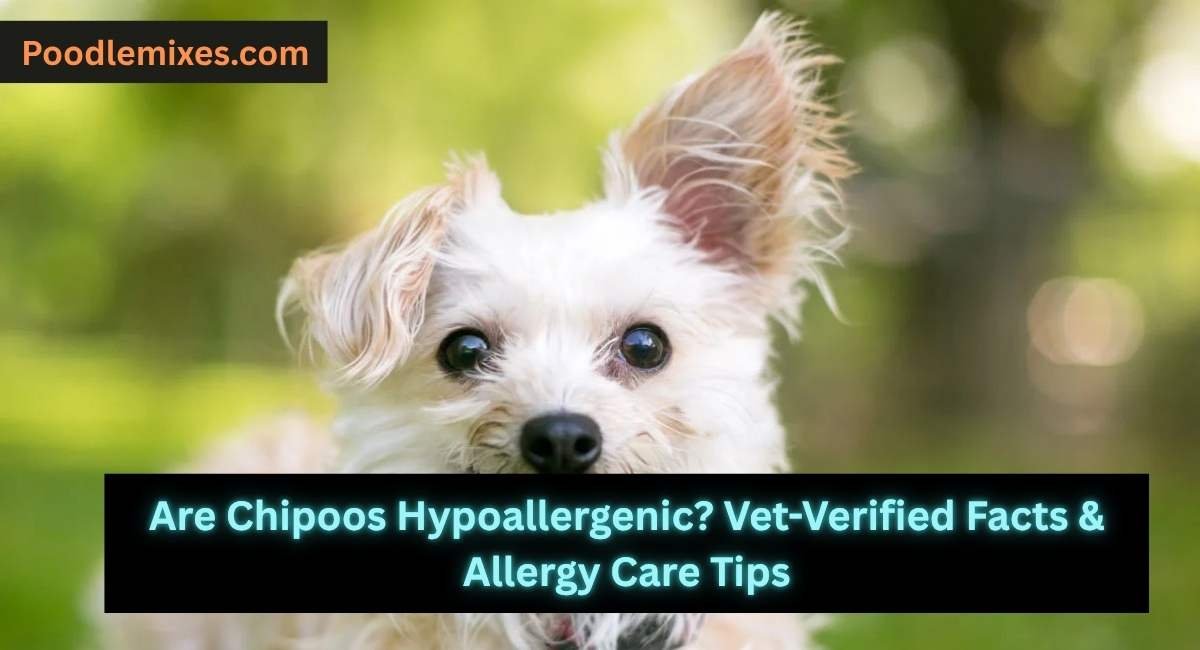Are Chipoos hypoallergenic? Many people wonder if these charming Chihuahua-Poodle mixes are safe for allergy sufferers. While no dog is 100% hypoallergenic, let’s explore how this breed affects allergy sufferers.
Chipoos inherit the Poodle’s low-shedding coat, reducing airborne dander—the primary allergy trigger. However, they still produce saliva and skin dander that can cause reactions. Their minimal shedding makes them a better choice than many breeds, but sensitive individuals should spend time with a Chipoo before committing.

Overview of Chipoos
- Quick facts: Small size, soft wavy/curly coat, friendly and affectionate temperament
- Shedding level: Low to non-shedding
- Grooming needs: Moderate (regular brushing and professional grooming every 4-6 weeks)
- Popularity/recognition: Not recognized by AKC; recognized as a designer hybrid breed by various kennel clubs and registries
What Does “Hypoallergenic” Really Mean?
The term “hypoallergenic” suggests a lower likelihood of causing an allergic reaction. It is a marketing label, not a scientific guarantee. Products or pets with this label are often formulated or bred to reduce common allergens.
A common misconception is that “hypoallergenic” means “allergy-free.” This is false; allergic reactions can still occur. Scientifically, no breed of dog or cosmetic is 100% allergen-free, as individual sensitivities vary greatly {AKC, allergy experts}.
Are Chipoos Hypoallergenic?
No, Chipoos are not considered hypoallergenic because they are moderate to heavy shedders, producing a significant amount of dander and hair that carries allergens.
However, individual reactions can vary. Some people with mild allergies may tolerate a Chipoos better than other breeds, but they are not a reliably safe choice for most allergy sufferers.
Factors That Influence Allergies in Chipoos
1. Shedding & Coat Type
Chipoos shed moderately year-round, with increased seasonal shedding during spring and fall. Their wavy or curly coat traps loose hairs, which can still release allergens into your home environment.
2. Dander Production
Chipoos produce moderate dander, the tiny skin flakes that trigger most pet allergies. While they produce less dander than heavy-shedding breeds, they’re not considered hypoallergenic like Poodles or Schnauzers.
3. Saliva & Drooling
Chipoo saliva contains common canine allergens that spread when they lick themselves or household surfaces. Fortunately, Chipoos typically drool very little, reducing saliva-based allergen distribution.
4. Grooming Needs & Maintenance
Brush Chipoos 2-3 times weekly and bathe them monthly. Regular grooming removes loose hair and dander before they spread, while bathing washes away accumulated allergens from their coat and skin.
Tips for Allergy-Prone Families Considering Chipoos
Considering a Chihuahua-Poodle mix? Manage allergies with these tips. Commit to frequent grooming and daily vacuuming to control dander and loose fur. Install HEPA air filters to purify your home’s air. Always consult your doctor about allergy medications for family members. Most importantly, spend time with the breed before adopting to test individual reactions. These proactive steps help ensure a happy, healthy home for everyone, including your new furry friend.
Alternatives: Best Hypoallergenic Dog Breeds Similar to Chipoos
If you love Chipoos but need a low-dander alternative, consider these similar breeds. The Poodle is highly intelligent and comes in three sizes. The gentle Maltese is a loving companion with a long, flowing coat. The cheerful Bichon Frise is known for its playful personality and curly white fur. Finally, the athletic Portuguese Water Dog is energetic and requires regular grooming. Like Chipoos, these breeds are celebrated for producing less dander and require consistent grooming and regular exercise to stay happy and healthy.
What Expert Insights & Veterinary Advice for Chipoos
Veterinarians advise: “Allergy management is crucial. Use hypoallergenic diets, regular grooming, and prescribed medications. Avoid common allergens like certain proteins or pollen.”
For more, visit the American Kennel Club and the American Veterinary Medical Association.
Conclusion
Chipoos are not hypoallergenic, but with proper care, many families can still enjoy living with them. Responsible pet ownership, including regular grooming and cleaning, is essential. Before adopting, it is highly recommended to consult with an allergist to ensure a safe and healthy environment for everyone in the household.
FAQs (2 line answers only)
Is Chipoos truly hypoallergenic?
No dog is 100% hypoallergenic. Chipoos are low-shedding, which reduces allergens.
Do Chipoos puppies cause fewer allergies than adults?
No, allergy levels depend on dander production, which varies by individual dog, not age.
Can regular grooming make Chipoos more hypoallergenic?
Yes, frequent grooming removes dander and loose hair, reducing airborne allergens significantly.
Is it safe for children with allergies to live with Chipoos?
Consult a doctor first. Chipoos may be suitable for mild allergies with proper management.
Are Chipoos good for people with allergies?
They’re among better choices due to low shedding, but individual reactions vary greatly.
Do Chipoos shed a lot?
No, they’re minimal shedders thanks to their Poodle lineage, producing less dander.
How can I reduce allergies if I own a Chipoos?
Groom regularly, use HEPA filters, wash bedding often, and keep the dog off furniture.
Can grooming Chipoos make them more allergy-friendly?
Yes, professional grooming every 4-6 weeks minimizes dander and allergen accumulation.
